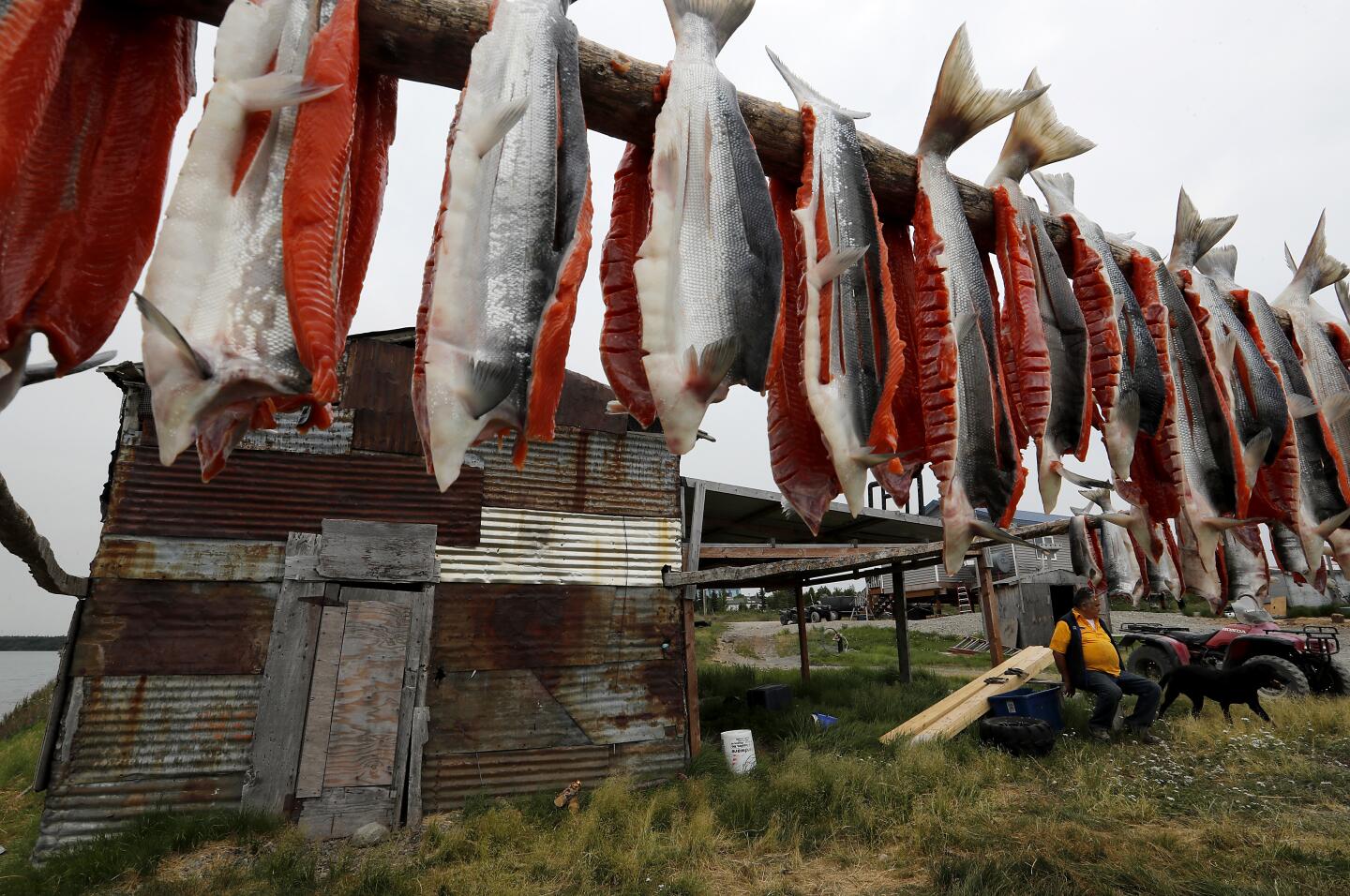
A sport fisherman pulls a lure box from his pocket to fish along the rapids of the Newhalen River near Iliamna. (Luis Sinco / Los Angeles Times)

Sockeye salmon are tethered to the shore in the fast-moving current of the rapids on the Newhalen near Iliamna. The area is noted for sport fishing. (Luis Sinco / Los Angeles Times)

A child stands in a doorway in Igiugig, where Lake Iliamna spills into the Kvichak River in Alaska. Igiugig, which means “Like a Throat That Swallows Water” in the native language, has about 50 residents. Median household income is about $23,000 a year. (Luis Sinco / Los Angeles Times)
Advertisement

Brooks Falls in Alaska’s Katmai National Park attract brown bears that fish for sockeye salmon as they try to overcome 6-foot cascades to reach spawning grounds in nearby Brooks Lake. (Luis Sinco / Los Angeles Times)

A bear and her cubs dine on salmon that was caught as it swam upstream at Brooks Falls in Alaska’s Katmai National Park. (Luis Sinco / Los Angeles Times)
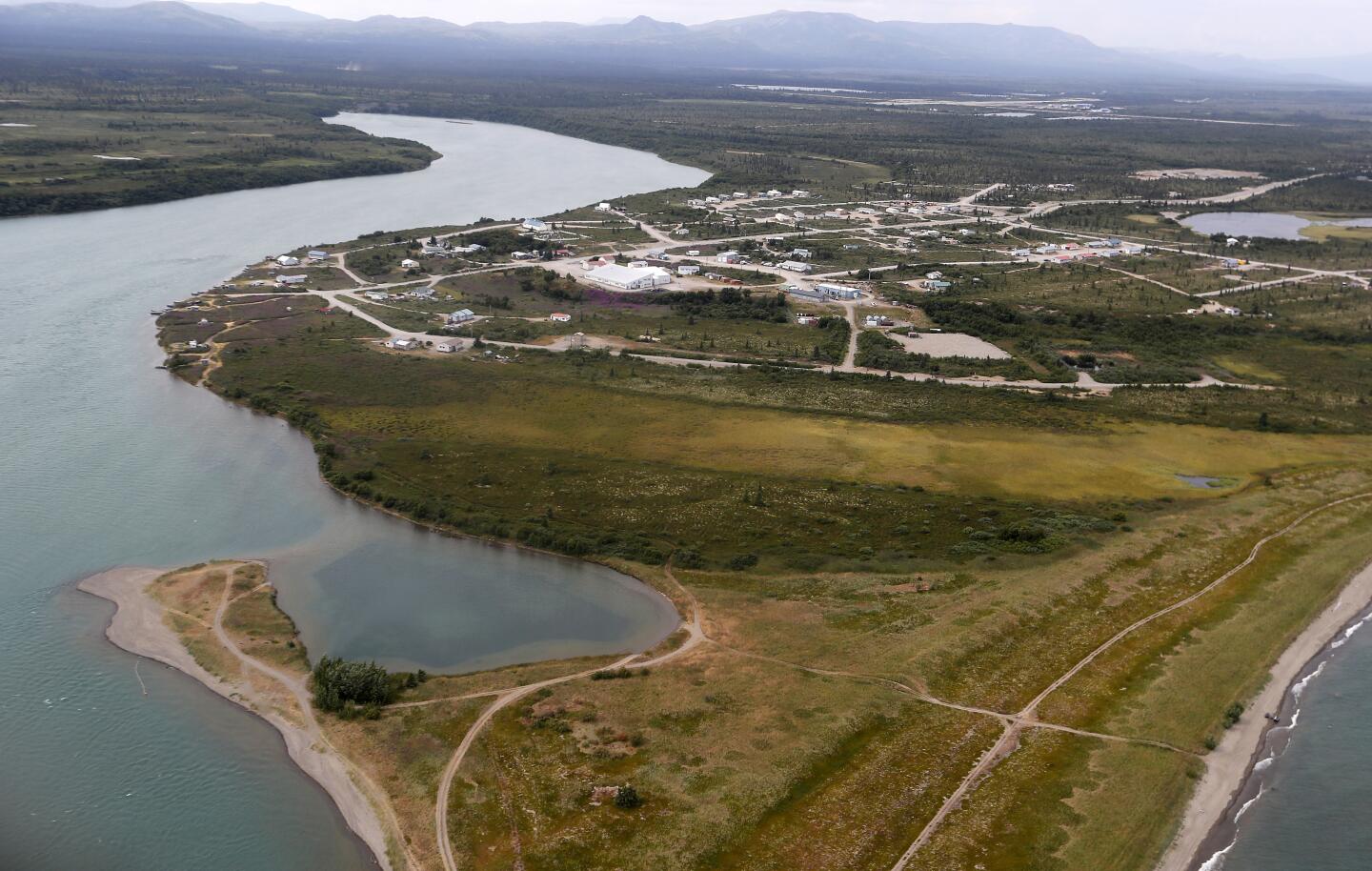
The Newhalen River empties into Lake Iliamna at the village of Newhalen. The remote community has a population of about 190 and includes native Yupik, Alutiiq and Athabascan peoples. (Luis Sinco / Los Angeles Times)

Lifelong Iliamna resident Myrtle Anelon holds a pair of mukluks made of sealskin and fur by her grandmother. Anelon supports the development of the proposed Pebble Mine. (Luis Sinco / Los Angeles Times)
Advertisement

Jim Lamont motors his skiff to the mouth of the Newhalen River, where he sets his gill net for sockeye salmon. He opposes Pebble Mine, concerned about the huge amounts of waste tailings the operation could produce. (Luis Sinco / Los Angeles Times)
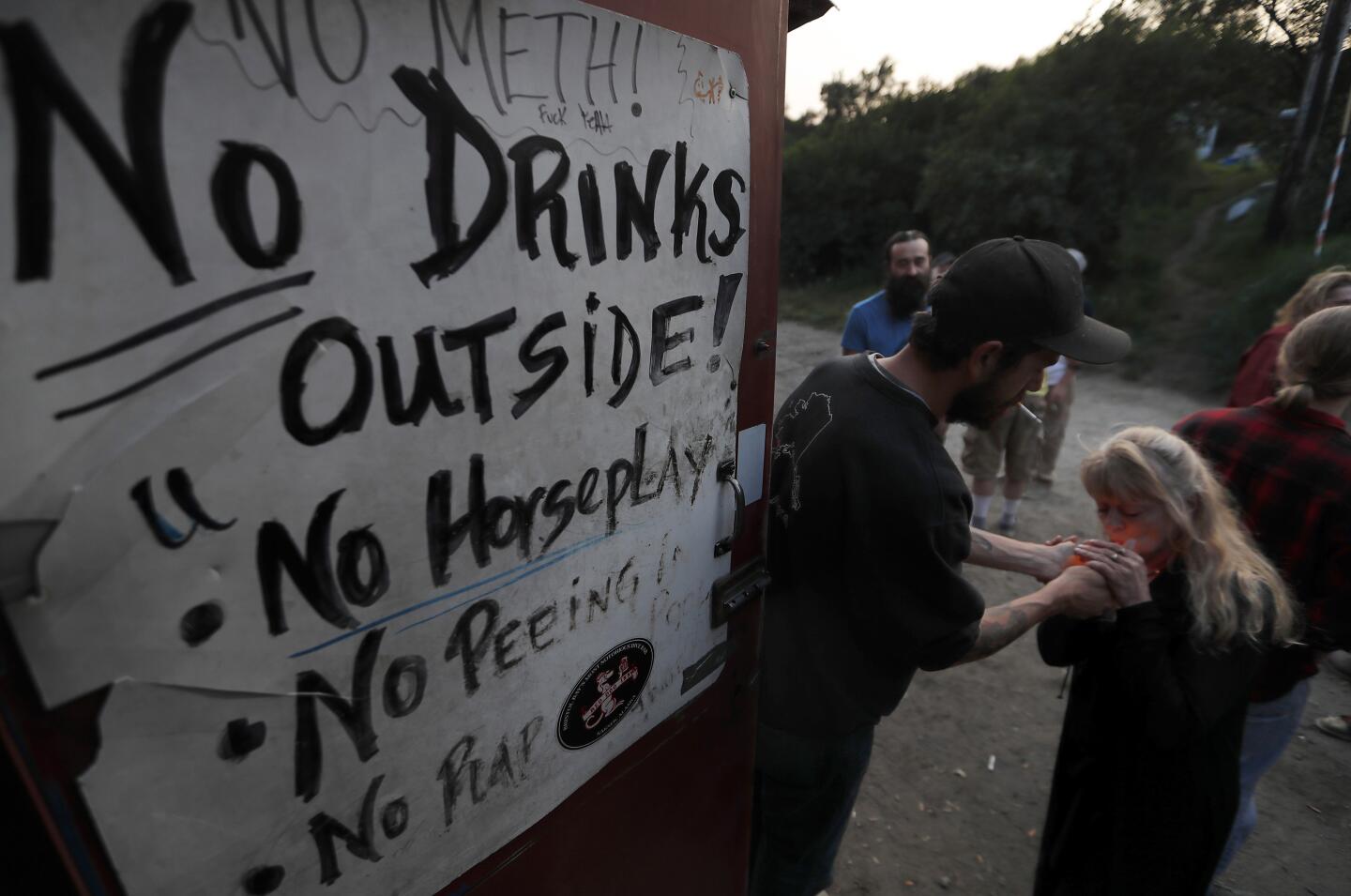
The rules of the Red Dog Inn in Naknek are spelled out at the door. The town’s population of about 600 swells to thousands during the summer sockeye salmon fishing season. (Luis Sinco / Los Angeles Times)
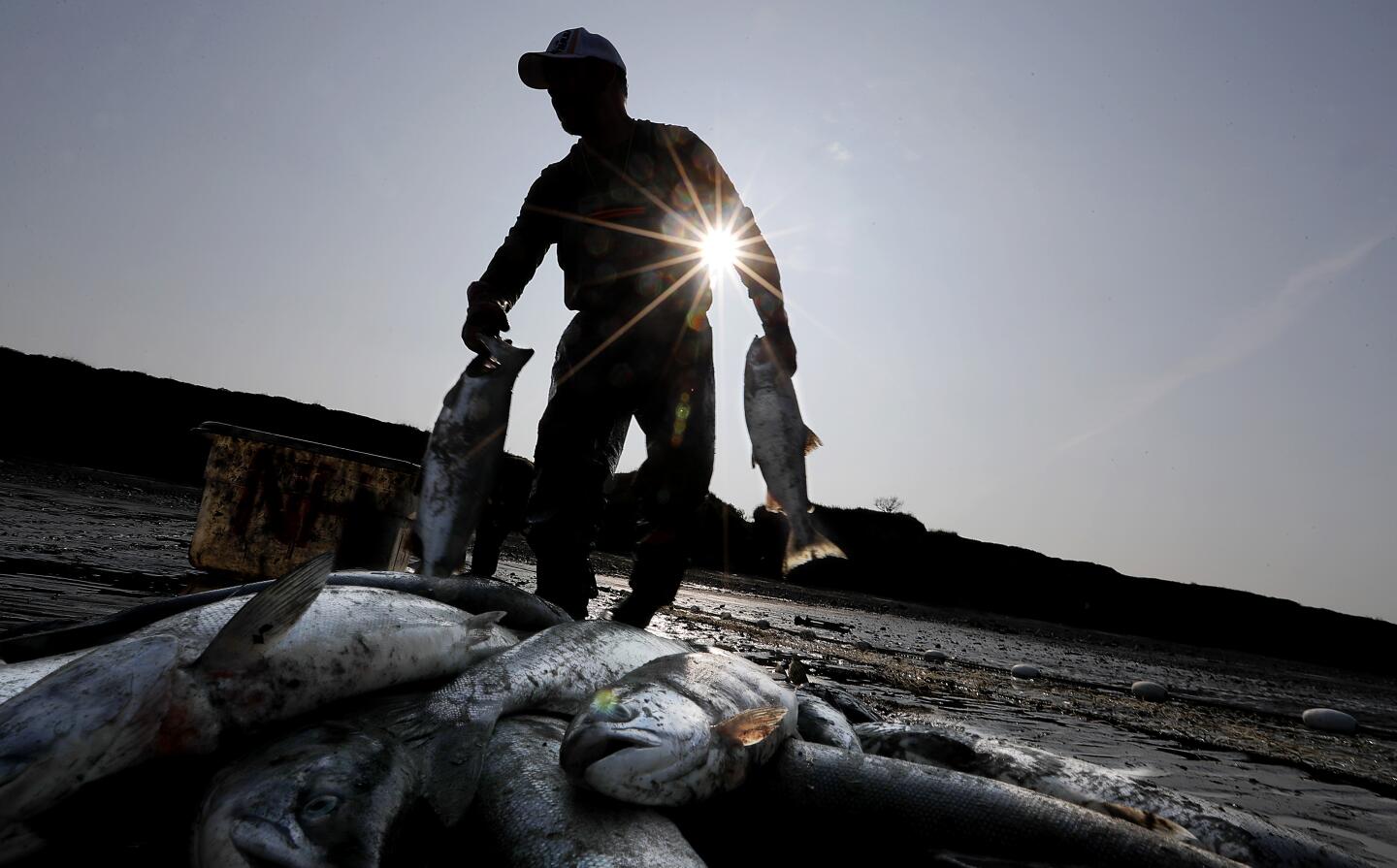
Commercial fisherman Austin Hill collects sockeye salmon pulled from his set net and piled on the beach near the mouth of the Naknek River. Last year’s run set a record with over 62 million sockeye salmon in Bristol Bay. (Luis Sinco / Los Angeles Times)

A sport fisherman shoulders his daily limit of five sockeye salmon, which he caught along the rapids of the Newhalen River near Iliamna. (Luis Sinco / Los Angeles Times)
Advertisement

A cross marks a grave in the cemetery behind the Russian Orthodox church in Newhalen. The religion followed Russian traders and explorers who came to Alaska in the early 17th century. The influence of the church remains strong in villages like Newhalen, about 20 miles from the proposed Pebble Mine site. (Luis Sinco / Los Angeles Times)
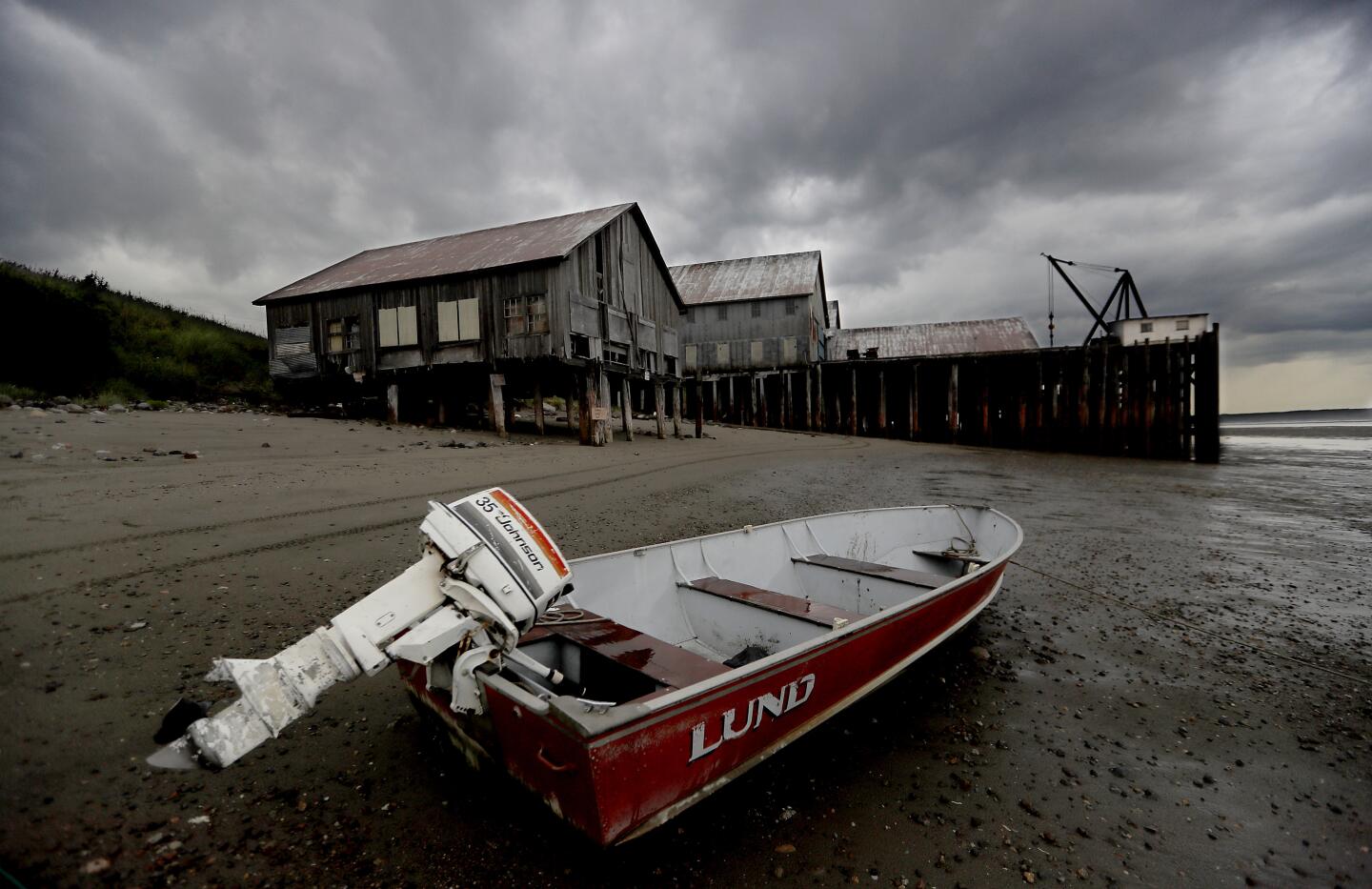
A fishing boat rests on the banks of the Naknek River. The town of Naknek has several processing plants that hire hundreds of workers to pack and ship salmon during the brief summer run. (Luis Sinco / Los Angeles Times)
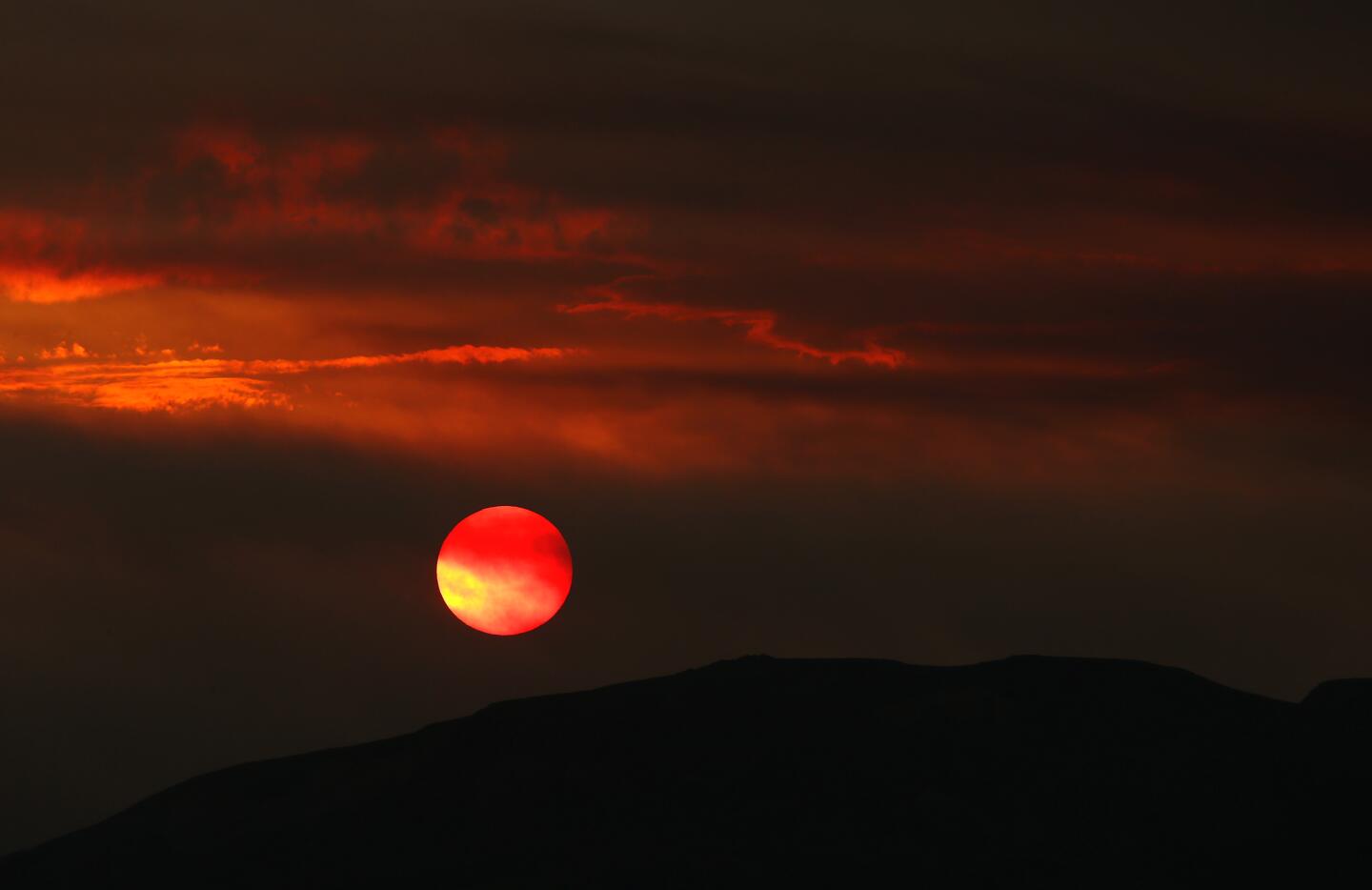
Thick smoke from a wildfire in the tundra near the village of Iliamna partially obscures the setting sun. Iliamna is about 20 miles from the site of the proposed Pebble Mine. (Luis Sinco / Los Angeles Times)
